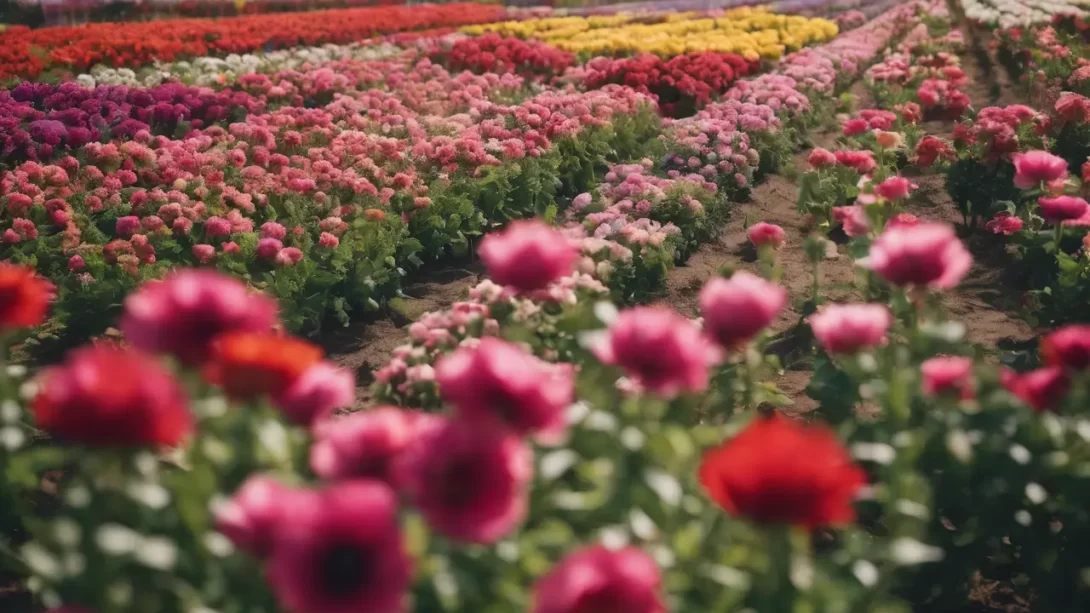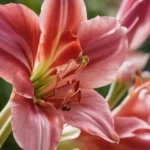Embarking on the journey of starting a flower farm combines the love of horticulture with the spirit of entrepreneurship. The flower farming industry, while challenging, offers immense rewards and satisfaction through the cultivation and sale of beautiful blooms. As an aspiring flower farmer, you should consider several key factors before diving in. These include the scale of your farm, the ideal location for growth, and the target market you aim to serve. Whether you dream of a small, boutique operation or a large-scale commercial farm, understanding these foundational elements is crucial.
Market
Before planting a single seed, it’s vital to conduct thorough market research. This includes understanding both local and broader markets for cut flowers. Identify potential customers like local florists, community farmers’ markets, and direct-to-consumer sales channels. It’s also essential to stay abreast of trends in the floral industry, as consumer preferences can shift. Determine which types of flowers are in demand in your target market. This research will guide your decisions about what varieties of flowers to grow, ensuring that your produce meets existing market needs and preferences.
Planning Your Flower Farm
Developing a comprehensive business plan is your next step. This plan should outline your business objectives, financial projections, and a marketing strategy. When selecting a location for your flower farm, consider factors like climate, soil quality, and water availability. These factors will significantly influence what flower types can be successfully grown. Also, think about the scale of your operation and its potential for future expansion. Do you envision a small family-run farm, or are you aiming for larger commercial production? This decision will shape many aspects of your business, from land size to labor needs.
Choosing the Right Flowers
Selecting the right flowers to grow is a balancing act. You need to consider which varieties are in demand in your target market, but also what will grow well in your local climate and soil conditions. Explore different flower varieties, including annuals, perennials, and specialty flowers. Annuals, like sunflowers and zinnias, might need replanting each year but can offer quick blooms, while perennials, such as peonies and lavender, require more time to establish but provide blooms for many years. Specialty flowers, like rare orchids or heirloom roses, can cater to niche markets. The key is to choose a diverse mix that ensures a steady supply of blooms throughout your growing season.
Preparing the Land
The foundation of any successful flower farm is well-prepared land. Start by testing your soil to understand its composition and pH level. Based on these results, you may need to amend the soil to create the optimal growing conditions for your chosen flowers. This could involve adding organic matter, adjusting pH, or improving drainage.
Next, set up an efficient irrigation system. Proper water management is crucial for flower farming. Drip irrigation systems are often recommended for their efficiency in water usage and effectiveness in keeping the plants hydrated without overwatering.
Implementing sustainable farming practices is also vital. Techniques such as crop rotation and organic methods not only improve soil health but also contribute to the long-term sustainability of your farm. These practices can also be appealing selling points for environmentally conscious consumers.
Planting and Cultivation
With the land prepared, the next step is planting. You’ll need to decide whether to start your flowers from seeds or seedlings. Each method has its advantages, and your choice might depend on the specific flower varieties and your farm’s scale.
Develop a seasonal planting schedule to ensure continuous blooms throughout the growing season. Succession planting, where you plant new flowers at intervals, can provide a steady supply of blooms. This approach is particularly effective for annuals.
Pest and disease management is a crucial aspect of flower cultivation. Adopt integrated pest management strategies that focus on preventing problems before they start, using natural predators, and only resorting to chemicals as a last resort. This approach is not only better for the environment but also for the health of your flowers and soil.
Harvesting and Post-Harvest Handling
Harvesting flowers at the right time is key to maximizing their vase life and ensuring they reach your customers in the best possible condition. Learn the optimal stage to harvest each type of flower; some are best cut when they are just starting to open, while others may need to fully bloom.
After harvesting, proper post-harvest handling is critical. Techniques like immediate cooling, proper hydration, and careful storage help to preserve the freshness and quality of the flowers. Packaging and transporting flowers also require attention. Use methods that protect the blooms and stems during transit, ensuring they arrive at their destination looking their best.
This phase of the process is as important as growing the flowers, as it directly impacts their longevity and appeal to customers. Investing time and resources into effective post-harvest handling can significantly enhance the value and marketability of your flowers.
Marketing and Sales Strategies
Developing a strong brand and marketing strategy is essential for the success of your flower farm. Start by creating a recognizable brand that reflects the quality and uniqueness of your flowers. This can include designing a logo, creating professional marketing materials, and establishing a presence on social media platforms.
Choose your sales channels wisely. You might sell directly to consumers through farmers’ markets or an online store, supply local florists and event planners, or even consider wholesale options. Each channel has its benefits and challenges, and your choice should align with your business goals and capacity.
Building relationships is key in the flower industry. Regularly connect with florists, event planners, and other potential clients. Offering high-quality blooms, reliable service, and unique varieties can help you establish a loyal customer base.
Managing Your Flower Farm
Effectively managing your flower farm involves overseeing daily operations, labor management, and meticulous record-keeping. Create a schedule that includes planting, maintenance, harvesting, and marketing activities. Managing labor, whether it’s hired help or family members, requires clear communication and organization.
Financial management is another critical aspect. This includes setting competitive but profitable prices for your flowers, managing costs, and maintaining positive cash flow. Keep accurate records of expenses, sales, and profits to understand your business’s financial health and make informed decisions.
Navigating Challenges
As with any agricultural endeavor, flower farming comes with its share of challenges. Weather, market fluctuations, and labor issues can all impact your farm. Being adaptable and having contingency plans in place can help you navigate these challenges. For example, diversifying your crop can mitigate the risk of weather-related losses, while exploring different sales channels can help you adapt to market changes.
Conclusion
Starting a flower farm is a journey that requires passion, dedication, and a willingness to learn and adapt. From understanding the market to cultivating beautiful blooms and developing effective sales strategies, each step is a learning opportunity. Your efforts can result in a thriving flower farm that brings beauty to people’s lives and satisfaction to yours. As with any business, there will be challenges, but the joy of growing and sharing your flowers can make this entrepreneurial venture exceptionally rewarding.



